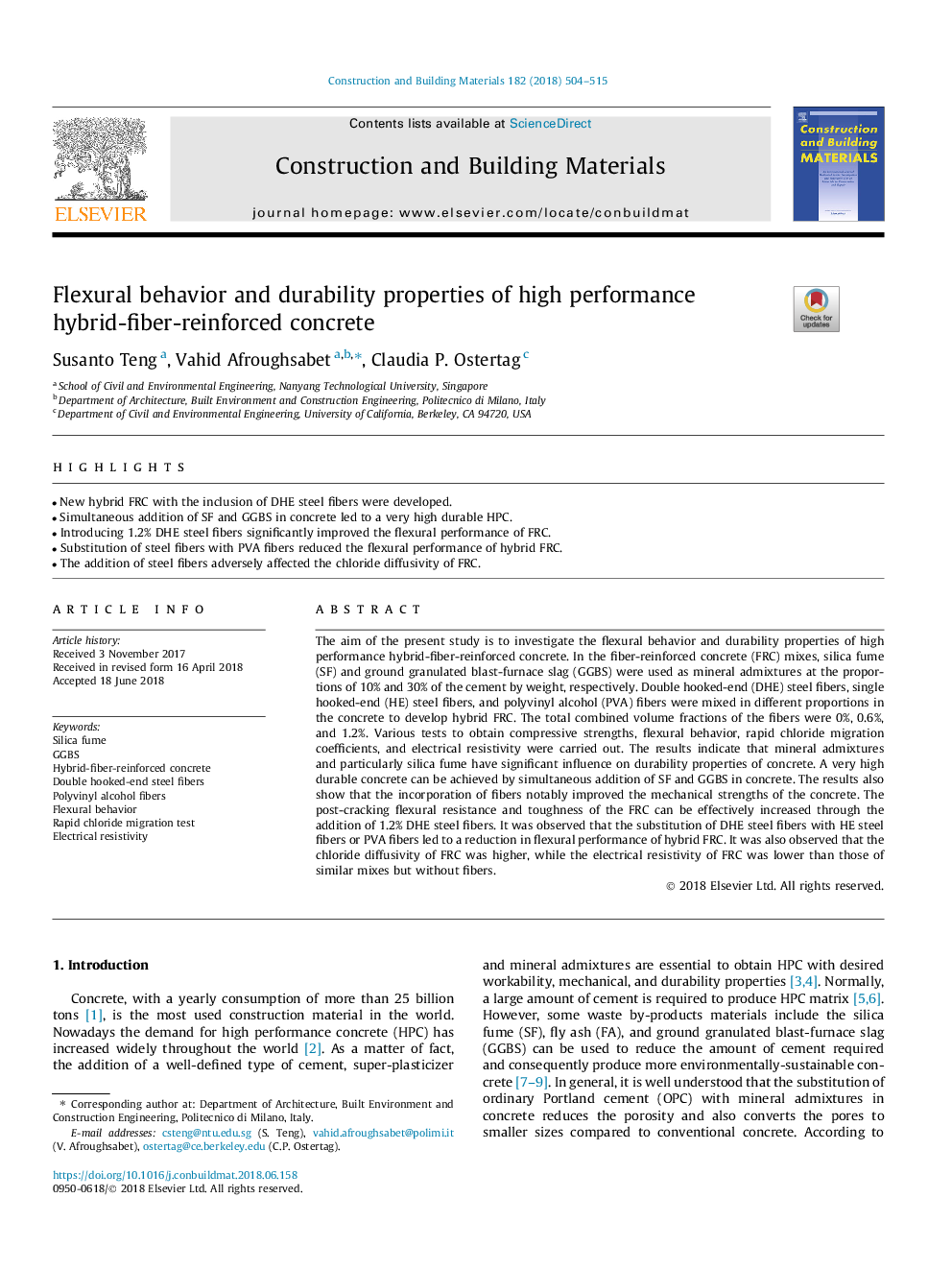| Article ID | Journal | Published Year | Pages | File Type |
|---|---|---|---|---|
| 6712261 | Construction and Building Materials | 2018 | 12 Pages |
Abstract
The aim of the present study is to investigate the flexural behavior and durability properties of high performance hybrid-fiber-reinforced concrete. In the fiber-reinforced concrete (FRC) mixes, silica fume (SF) and ground granulated blast-furnace slag (GGBS) were used as mineral admixtures at the proportions of 10% and 30% of the cement by weight, respectively. Double hooked-end (DHE) steel fibers, single hooked-end (HE) steel fibers, and polyvinyl alcohol (PVA) fibers were mixed in different proportions in the concrete to develop hybrid FRC. The total combined volume fractions of the fibers were 0%, 0.6%, and 1.2%. Various tests to obtain compressive strengths, flexural behavior, rapid chloride migration coefficients, and electrical resistivity were carried out. The results indicate that mineral admixtures and particularly silica fume have significant influence on durability properties of concrete. A very high durable concrete can be achieved by simultaneous addition of SF and GGBS in concrete. The results also show that the incorporation of fibers notably improved the mechanical strengths of the concrete. The post-cracking flexural resistance and toughness of the FRC can be effectively increased through the addition of 1.2% DHE steel fibers. It was observed that the substitution of DHE steel fibers with HE steel fibers or PVA fibers led to a reduction in flexural performance of hybrid FRC. It was also observed that the chloride diffusivity of FRC was higher, while the electrical resistivity of FRC was lower than those of similar mixes but without fibers.
Related Topics
Physical Sciences and Engineering
Engineering
Civil and Structural Engineering
Authors
Susanto Teng, Vahid Afroughsabet, Claudia P. Ostertag,
